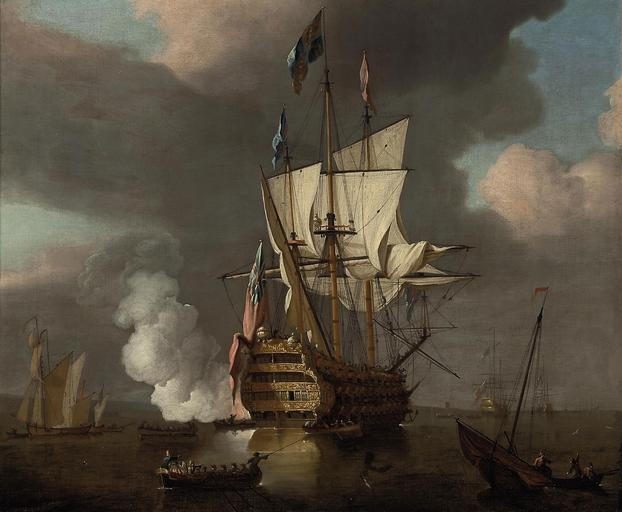MAKE A MEME
View Large Image

| View Original: | Peter_Monamy_-_The_flagship_Royal_Sovereign_saluting_at_the_Nore.jpg (2006x1652) | |||
| Download: | Original | Medium | Small | Thumb |
| Courtesy of: | commons.wikimedia.org | More Like This | ||
| Keywords: Peter Monamy - The flagship Royal Sovereign saluting at the Nore.jpg Artwork Creator Peter Monamy Designed by Surveyor Harding and built under his direction the second Royal Sovereign to serve in the fleet was a majestic three-decker measured at 1 883 tons and 174 feet in length with a 50 foot beam With a principal armament of 28-32pdrs on her gundeck she further mounted 28-18pdrs on her maindeck and 28-9pdrs on her upper deck with additional 6pdrs on the quarterdeck forecastle and roundhouse or poop to give a total of 102 guns In terms of sheer firepower she was a worthy successor to her earlier namesake although the grandeur and lavishness of her external carvings and decoration were also just as spectacular Indeed it is intriguing to speculate just how much of her cost was attributable to all this splendid though needless finery an issue which assumes even greater importance once her career is examined Launched on 25th May 1701 and commissioned for sea under Captain John Fletcher her first operational rôle was as flagship to Sir George Rooke when the War of the Spanish Succession began in 1702 Rooke's initial objective was the capture or destruction of Cadiz and to this end the fleet he had assembled left Spithead on 19th June 1702 Arriving at their intended anchorage near Cadiz on 12th August Rooke then displayed an ominous lack of energy which resulted in the failure of the several operations to take the city and a complete withdrawal a month later From there Rooke took the fleet to Vigo Bay where on 12th October 1702 he partially restored his reputation not only by destroying the French fleet at anchor there but also by seizing the Spanish treasure galleons it was guarding Millions in specie were captured yet one of the most curious aspects of the affair was that Rooke transferred his flag to the 80-gun Somerset beforehand and Royal Sovereign took no part in the action whatsoever <br/><br/> One possible explanation could be that Rooke was under orders not to damage let alone hazard his flagship by exposing her to enemy fire such was her status as the symbolic flagship of the entire Navy and in effect a national icon There is no documentary evidence to support such a theory yet it remains a mystifying fact that she never participated in any of the great sea-fights of her era despite several periods as flagship to successive commanding admirals For unspecified reasons she was effectively rebuilt by Master Shipwright J Rosewell at Chatham between 1723 and 1729 even though details of her later career are equally sparse Reclassed as a 90-gun 2nd Rate in 1756 three years later she was made Guardship in the Downs a position of some significance especially in time of war as was the case from 1756-63 Further reduced to an 80-gun ship in 1763 perhaps as a result of the restoration of peace she was broken up at Chatham a few years later probably in 1766 although some sources state 1768 This lack of clarity concerning the precise year of her demise somehow reflects the whole of her sixty-year career which started with such promise yet achieved so little oil canvas cm 87 6 104 2 This work is loosely derived from one of the Van de Velde portraits of this great ship which inspired a number of artists In spite of the signature inscribed it is unlikely to be by Peter Monamy There are several other closely similar compositions some of which are ascribed to an enigmatic painter known as T Leemans P Monamy P ~ lower left signature Christie's online 5387437 firsthalf other date century 18 Other versions PD-old-100-1923 HMS Royal Sovereign ship 1701 Peter Monamy 18th-century sailing ships in paintings War of the Spanish Succession | ||||